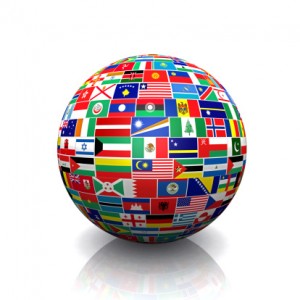This content has been archived. It may no longer be relevant
Last Thursday, at the Invesco Building in Atlanta, TrueLanguage’s Doris Johnson gave a workshop called “Writing for a Global Audience”. Her goal was to empower corporate writers and content creators with the knowledge needed to communicate effectively with clients in any international market, and she clearly succeeded – the attendees were engaged, the questions asked were thoughtful, and the reception was extremely positive. Congratulations, Doris!
The following are three of the questions asked at the workshop, and the answers we provided. One hour was hardly enough time to do justice to all of the topics Doris and her attendees were interested in, but we thought these three points were especially pertinent:
Question – Our company has employees in the UK, and sometimes they have a hard time understanding our US English documents and messages. What can we do to improve our communication with them?
Well, since we’re dealing with a common language, English, we can’t think of this as a translation or interpretation challenge. From a technical standpoint, there are three other processes that can and should be applied in a situation like this: adaptation for UK English, transcreation and glocalization. In truth, a combination of all three of these processes would be the most effective solution.
Perhaps the most important step toward improved written communication with a global audience is this: communication with the target market prior to generating the written text. Including your readers in the process will go a long way towards ensuring that your message is conveyed clearly, and will strengthen your relationship with them, too.
Question – What do you mean by “transcreation”?
One way to think of transcreation is as a kind of translation, but dealing with context instead of content. In fact, a good and effective translation always involves an element of transcreation. Here’s an example: imagine you have a source text in US English that provides instructions for applying for a passport, and you’re translating it into Spanish, French, German, Russian, Portuguese (for Brazil), and Arabic (for Egypt). You’re not just working with six languages here – you’re also dealing with six countries, six cultures, and six different passport application processes! Translation moves words from one language to another (or others), but transcreation exchanges the cultural details in the source text for those appropriate to each target market.
A related process is glocalization, which is, as you might guess, a portmanteau word for “global localization”. You could think of glocalization as happening at an earlier point in the writing process than translation and transcreation. Planning a foreign marketing campaign around popular figures in the target culture would be an example of glocalization, tailoring the message to the audience’s expectations in advance. For instance, a sportswear company operating in multiple countries would be wise to use the images and endorsements of each country’s favorite athletes in its materials. And to use an example Doris gave in her workshop, some of McDonald’s European restaurants have made shrewd use in their menus and publicity of Astérix the Gaul, a famous comic book character who’s known and loved throughout Europe (he even has his own amusement park near Paris).
Question – We’re looking to translate our website into multiple languages, and the content will be changing all the time. How do we prioritize which languages we translate into, and how can we keep translations of our dynamic content up to date?
The answer to the first part of this question? Research, research, and some more research. Look to the numbers, and to your business’ established goals. Where is the most important market for your business, and what makes it so important? What do you want your website to accomplish in all of its languages? Are you more interested in transmitting knowledge, selling merchandise, attracting subscribers, or something else?
As to the management of dynamic content – how much of the content is dynamic, and how much is fixed? How often will the dynamic content be changing? Do you use a content management system (CMS) to handle your website? If so, which one? And which translation management (TM) tool will you be using? By providing answers to these questions, and taking your own internal working practices into account, you’ll be able to craft a process of maximum efficiency and effectiveness. Depending on your available technology, it may be possible to set up a pipeline between your TM and your CMS, automating your translation management workflow so that your dynamic content updates are scheduled as soon as the translations are finished.
If you’d like to know more about writing for a global audience, don’t hesitate to contact us… and keep an eye out for our next workshop!


